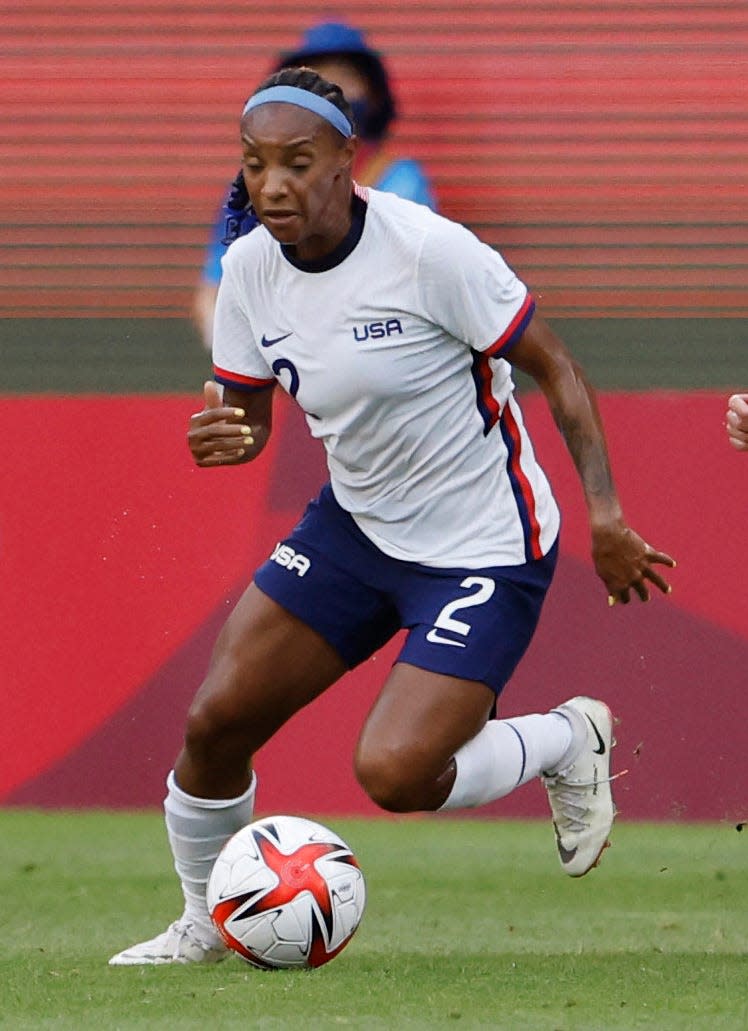Sophia Smith, Lynn Williams, Trinity Rodman and Alyssa Thompson are forwards. Ashley Sanchez is a midfielder. Crystal Dunn, Naomi Girma, Alana Cook and Sofia Huerta are all defenders.
Yet these nine women have something in common besides the USA they’ll proudly wear on their jerseys for the next month.
All of them are women of color. And, for most of them, they’ve spent the bulk of their careers being the only Black or brown person on their teams, as well as those they’ve faced.
Not so anymore. The USWNT’s World Cup squad is the most diverse it’s ever been, a blend of races, ethnicities and sexual orientation that is closer to accurately reflecting the country than what is often seen on suburban soccer fields.
“We are getting there. We’re close,” Dunn told USA TODAY Sports. “We’ve made so many strides… (but) I’m so passionate about always pushing for even more. I think it starts at the lower levels, introducing the sport and really giving access to it for kids across the board, minorities included.”
Growth in women’s sports: Resources ‘pouring’ ahead of 2023 World Cup, USWNT players say
Access and representation in US soccer
Soccer is called the beautiful game because of its flow and fluidity. But also because of its accessibility.
You don’t need fancy equipment or special clothes to play soccer. Just a ball and, in a pinch, wadded up socks or paper will do. It’s played all over the world, by people of all shapes, sizes, colors, creeds and genders.
In the United States, however, soccer has not been quite so welcoming. Rather than being a game for everyone, it’s largely been a sport for white, affluent, suburban kids, specifically.
And for much of the USWNT’s history, the World Cup and Olympic teams have mirrored that. No surprise, given the elite teams and development programs that produce most of the national team players are predominantly white.
“When I was growing up, there wasn’t a lot of Black people playing soccer, let alone on the national team, to look up to,” Williams said.

There have been notable exceptions. Briana Scurry, the goalkeeper on that iconic 1999 team, is Black. World Cup champions Shannon Boxx and Christen Press are biracial. Amy Rodriguez, who won titles at the 2012 Olympics and 2015 World Cup, is Latina.
The reasons for the lack of diversity are varied. Children of color often don’t have access to playing fields or opportunities to play. The pay-to-play model so prevalent in the United States favors means over talent. Outreach to underrepresented communities has not been a priority.
But the biggest challenge is that kids don’t feel welcome when they don’t see other kids who look like them. What’s the incentive to stay in a sport when none of your friends are playing it? When there’s no one for you to look up to as a role model?
When there’s little to no representation?
“That visibility and representation is really important,” Dunn said. “As a woman of color, I’ve always tried to play for something more than myself. Every time I take the field, I know that I’m representing minorities who, not everyone has had that opportunity to step foot into the game, let alone continue on to reach the highest level.”
Increasing diversity in the beautiful game
But just as this country is becoming increasingly diverse, so, too, are the men’s and women’s national teams.
At the men’s World Cup last fall in Qatar, 14 of the 26 players were men of color, including captain Tyler Adams. The USWNT could have at least six women of color in its starting lineup.

That diversity extends beyond race, too. Several players on this team are openly gay, as has been the case with recent World Cup and Olympic teams.
“I think it’s just awesome that the national team is starting to look like the nation,” Williams said. “We have gay people. We have straight people. We have Black people. We have Mexican people. It looks like the United States, and I think that’s exactly what it should look like… so hopefully the younger generations can look to us and say , ‘You know what? Soccer is a space for me, and we want to play as well.'”
The women on this team are secure enough in their careers to know they belong, regardless of what they look like or who they love. But there was a time in the not-too-distant past when they didn’t. Or doubted whether they did.
By being the people they wished they’d seen when they were younger, the diverse players on this World Cup team are ensuring children of color, queer kids and others will always feel they have a home in the game. At every level.
“One of the greatest strengths this team has is that we are all different. And we celebrate that difference and we allow ourselves to be our full selves on the field,” Megan Rapinoe said, “so we can go out there and do what we love to do best.”
That is the ultimate beauty of the beautiful game.
Follow USA TODAY Sports columnist Nancy Armor on Twitter @nrarmour.
This article originally appeared on USA TODAY: USWNT’s most diverse team yet enters 2023 World Cup stronger than ever